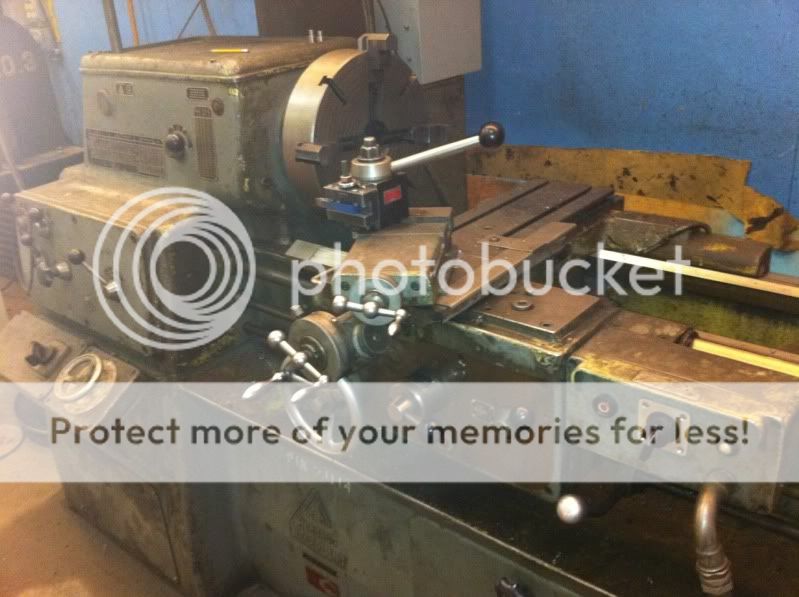
Hembrug Lathe Manual
Hembrug Ergonomic Lathes email: t ony@lathes.co.uk Home Machine Tool Archive Machine-tools Sal e & Wanted Machine Tool Manuals Catalogues Belts Books Accessories If any reader has Hembrug sales literature or photographs of their lathes, the writer would be delighted to hear from you. Typical late-20th Century lines of the Hembrug Ergonomic hard-turning lathe. This example is ex-Boeing Aircraft Company Available in all-inch or all-metric.
Hembrug Ergonomic This lathe is a Hembrug Ergonomic. This is a super-precision toolroom lathe made in Holland by NV Hembrug in approx. I purchased it from Boeing in 2001 and have cleaned it up but done nothing else with it since. I ran it through the speeds and feeds but have not mounted a toolpost or made chips. It's not presently for sale, but I've left this page up to share information about this unusual machine, and perhaps find another owner of one. 
The Ergonomic has performance features in common with an HLV-H or 10EE but was made primarily for the more specialized application of 'hardturning'. That refers to using diamond or other exotic tooling in a precise, rigid setup for turning hard materials directly to a surface finish of 'ground' quality, without grinding. As a conventional lathe its specs are excellent. For more information please email Some basic specs: Center-center distance is 400mm or approx. Swing over bed is 12', swing over cross slide approx. Longitudal (carriage) travel is 375mm or about 15'. Cross travel is 120mm or about 5'.
Spindle nose is D-4 camlock outside, MT5 inside and includes a 5C adapter. Spindle bore is 37mm or 1-7/16'. Tailstock is MT3. Spindle speed range is 36 gear selected speeds in geometric progression from 18 to 3550 rpm. Motor is 3.2KW (4HP), 230V 3 phase, 60hz.
Weight is 2750 lbs. Approximate dimensions are 60'H, 60'W, 24'D. Torrent easy billing crack.
The gear train / speed selection consists of a 2-speed motor close-coupled to a 9-speed transmission in the base, a belt coupling to the headstock, and a 2-speed transmission in the headstock. In the high speed range the headstock is 'direct drive' to prevent gear teeth from telegraphing into the surface finish.
This lathe was made in inch measure for export to the U.S. -- it has inch screws and dials. The lead screw is 6 tpi.
As set up, it will ironically not cut metric threads. On the apron, the lever on the top right is the carriage way lock. The lever on the lower left engages the half-nut. The left dial is the cross slide and the right dial is the carriage handwheel. They are all inch dials as are the top slide and tailstock. The lever sticking out to the right under the carriage feed is the feed lever and selects longitudal up, cross down.

In the cross slide the backlash is a consistent.025' over the range. The travel engages crisp feeding in. The top slide, backlash progresses from.010' at the outboard extreme to.014' at the inboard extreme. The bed ways look good, keep in mind the saddle is half as long as the entire bed, the contact area is huge. The electric panel is wired for coolant -- coolant was an option but is not on this lathe.
The spindle face suffered an apparent tool crash (or two). The lathe has an internal feed gearbox that selects 18 feed and threading combinations in either forward or reverse direction. The gearbox is used in conjunction with external change gears to provide a wide range of feeds and inch threads. Only one set of 4 gears 50/60/80/100T are included here so you only get 10, 12, 14, 16, 18, 20, 24, 28, 32, 36, 40, 80 tpi et. Not the coarser threads. The gears are metric 1.5 module and you may try to obtain or make the rest of the set or you might just toss them and adapt a set of 16dp gears, whatever works for you.
With this gear set you do get a useful range of feeds at least. Note that while the top spindle speed is 3550 rpm, the external gears should be disengaged when running the spindle at that speed.
The original outboard gears apparently were fiber, micarta, garolite or such and may have been capable of the full spindle speed. At the moment, that is moot. The lathe includes a professionally made copy of the manual for the metric version of this lathe. It appears identical in every way except that the screw pitches, dials and thread chart do not apply. The manual includes fold-out exploded parts diagrams and electrical schematics. Also included is an original sales brochure, copies of some Taylor-Hobson test charts and other literature.